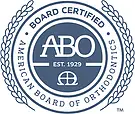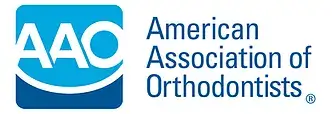Did you know the American Association of Orthodontists suggests kids should see an orthodontist by age seven? Many parents think braces are only for teens. But, early checks can spot dental problems early.
Key Takeaways
- The American Association of Orthodontists recommends the first orthodontic visit by age seven.
- Early orthodontic treatment can prevent minor problems from becoming major issues.
- Orthodontic treatment typically starts when children are between eight and fourteen years old.
- Common indicators of the need for early orthodontic care include protruding teeth and mouth breathing.
- Early treatment can reduce overall treatment time and the need for more invasive procedures later.
Why Early Orthodontic Evaluation is Important
The American Association of Orthodontists (AAO) Guidelines suggest a first orthodontic check-up at age seven. At this time, orthodontists can spot problems early. This leads to many benefits from starting treatment early.
Early treatment can make future care simpler and cheaper. Issues like underbites and overcrowded teeth can be fixed with easier methods. For example, making space for permanent teeth might avoid the need for tooth removal later.
Common problems found early include underbites, crossbites, and gaps. Catching these issues early can improve dental health. It can also stop gum disease and tooth decay before they get worse.
The AAO recommends early checks because they can also fix habits like thumb sucking. These habits can harm teeth if not stopped by age five or six.
The results of first orthodontic visits vary. Some kids might not need treatment right away. Others might need follow-up visits to watch their teeth grow. Starting treatment early can use growth periods to help treatment work better.
Following the AAO Guidelines for early checks can lead to better dental health for kids. Spotting and treating orthodontic problems early can prevent bigger issues. This helps kids have a healthier, more confident smile for years.
At what age should orthodontic treatment begin?
Finding out at what age should orthodontic treatment begin is key for good dental health. The American Association of Orthodontists (AAO) says kids should see an orthodontist by age seven. At this time, they have enough permanent teeth for an orthodontist to check.
Early checks help spot problems early. This can fix issues like:
- Underbites
- Crossbites
- Very crowded teeth
- Excessively spaced teeth
- Extra or missing teeth
- Abnormal teeth contact
- Habits affecting teeth or jaw growth (e.g., thumb sucking)
Starting early can save money and effort later. For example, expanding the palate works best when the patient is young. This can avoid more serious treatments or surgery later.
Most orthodontists offer free consultations for kids. These checks can lead to three outcomes:
- No treatment is needed now.
- Treatment might be needed later, with regular check-ups.
- Problems that need treatment now are found.
Knowing when to start orthodontic care is vital to avoid bigger dental problems. The AAO says early treatment makes corrections easier and more effective than waiting for all teeth to come in.
Conclusion
Getting orthodontic treatment at the right time is key for lasting results. The American Association of Orthodontists suggests a first visit at age seven. This early check-up can spot problems like overcrowding and crossbites before they get worse.
Starting treatment early, between ages 6 and 10, can fix issues before they get complex. This is very important for kids. It can save time and money by avoiding bigger problems later. Around ages 11 to 13, many kids also start orthodontic treatment. This is because their bones are easier to move during this time.
But, adults and seniors are also getting orthodontic treatment. They want to fix jaw misalignment, crowding, and bite issues. Adult treatments might cost more and take longer because of the needed corrections. Yet, the benefits of a straight smile, better oral health, and more confidence are worth it. The goal is always to get a bite that works well and looks good, for better health and happiness.









